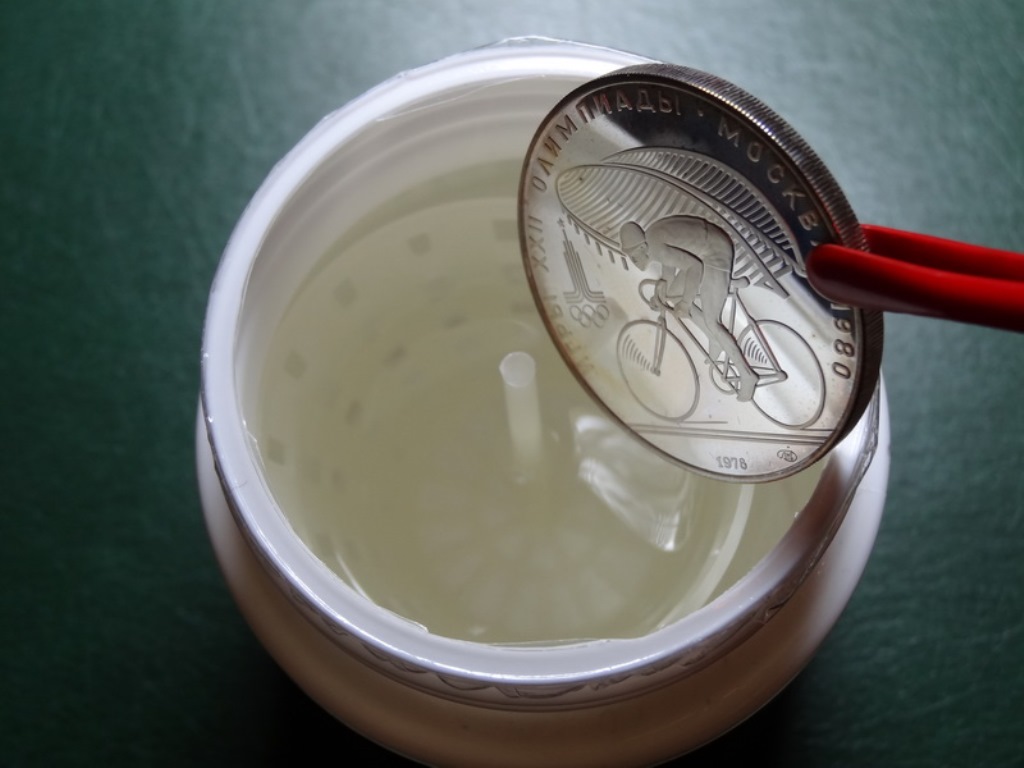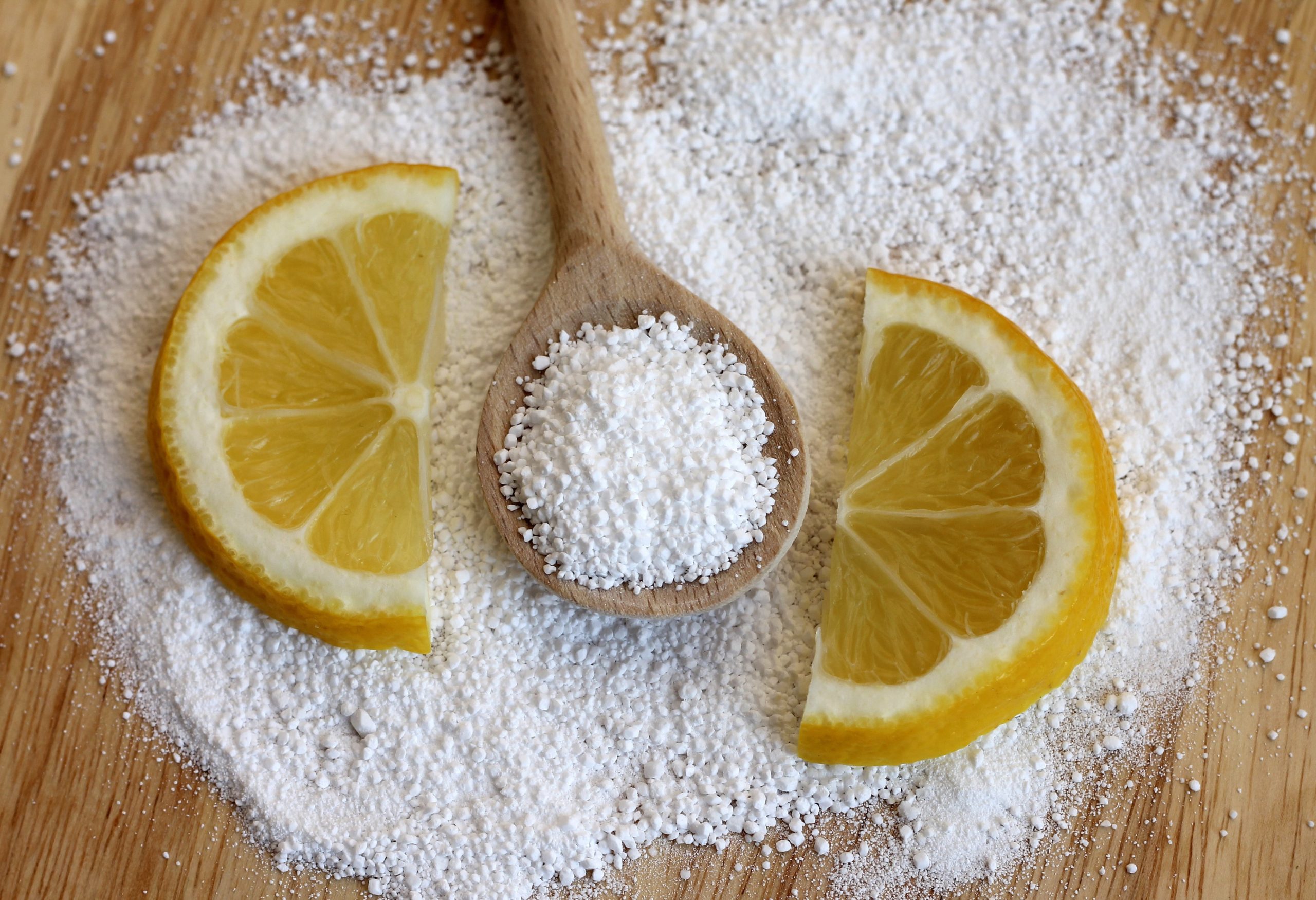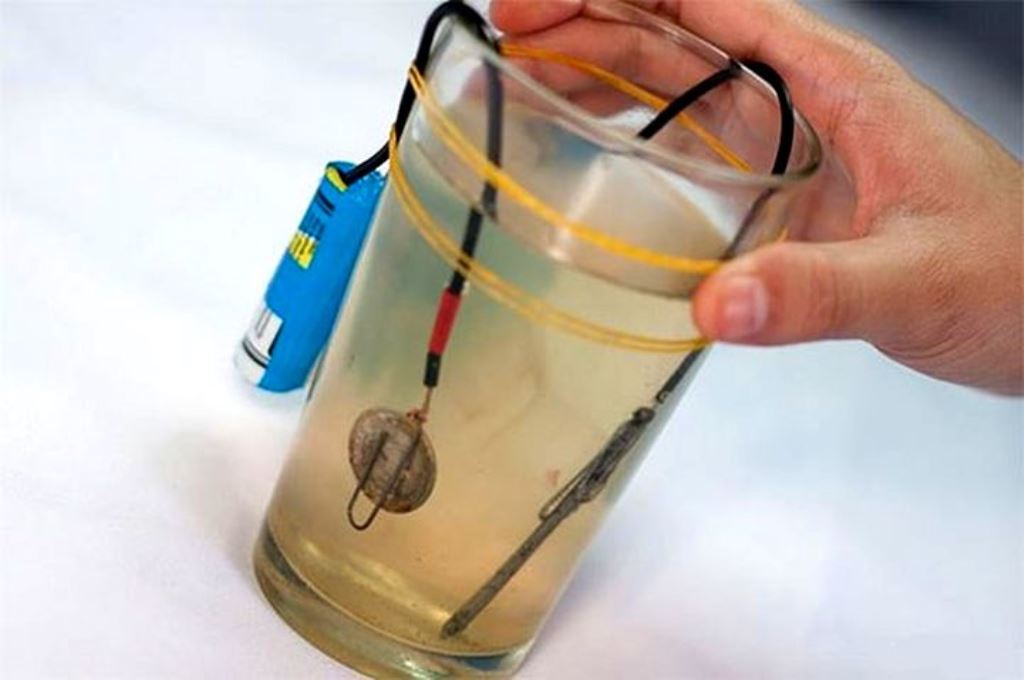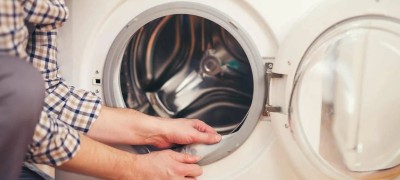How to clean coins at home
Any coins tend to get dirty over time, becoming covered with rust and bloom, which makes them not only unattractive, but also unreadable. However, cleaning coins at home must be done competently so as not to damage the alloy.

How to clear coins
Shiny, polished coins look impressive and should be cleaned if grease or dirt appears on them. However, the surface of the coin can become covered with a patina - uniform oxidation, indicating a long history and protecting from external influences. This gives money a noble look, and therefore craftsmen often create an artificial patina, "aging" the coin in a short time. However, oxidation can cover the surface with sloppy stains and individual stains, and then cleaning is already justified. However, there may be other imperfections under the patina layer, such as small cracks or scratches.

For some types of coins, cleaning is categorically contraindicated, since old samples, which are already not in the best condition, receive additional damage, which reduces their value and value. Such specimens are recommended only to be wiped from dust and fingerprints, and then placed in a protective container.

Important! When cleaning coins, you need to not only push off from the alloy, but also avoid the use of abrasives, as they can ruin the thing.
Copper
Copper corrodes more than other metals, as a result of which a green (due to moisture), red (lack of ventilation) or black (patina) coating forms on its surface. Cleaning copper coins requires special care, since corrosion processes often provoke the appearance of depressions and cracks that destroy the product from the inside. Therefore, before starting cleaning, it is worth carefully examining the condition of the instance. The effectiveness of cleaning methods varies and depends on the degree of contamination and the accuracy of the work.

Typically, the following techniques are used:
- 5% ammonia solution or ammonia solution against red plaque;
- citric or oxalic acid solution against green plaque;
- acetic acid solution against yellow plaque.
In all cases, the coin is immersed in the solution for two minutes, after which it is rinsed with running water and thoroughly wiped off.
Important! The proposed cleaning solutions are quite aggressive, have a pungent odor and are highly flammable, therefore, you can work with them only with tight gloves and with good ventilation of the room.

After removing the plaque, the stubborn dirt is removed.This is done by placing the specimens in boiling distilled water with the addition of petroleum jelly. After that, rinsing with alcohol is required.
Silver
The method of caring for a silver coin should be chosen based on the sample and the degree of oxidation. The composition of the sample can be different, and therefore the approach should be different.

Note! Almost all modern metal cleaners are acid-based, and therefore using them to clean coins will remove the surface layer of the metal. Because of this, the copy will lose collectible value and contain less silver.
The following methods are used to clean silver coins:
- Soda and citric acid. First, the coins are placed in water with citric acid for twenty minutes, and then they are cleaned with soda moistened with a little water. After manipulations, they are washed with clean water.
- Sulfuric acid for stains and green spots. Coins are placed in the acid diluted with cold water for a while. Then, with the help of thick rubber gloves, they are removed, cleaned with a soft brush, rinsed with clean water and wiped dry.
- Ammonia. Silver copies are placed in alcohol for twenty minutes. During this time, they cannot be removed in order to prevent contact with oxygen, but they can be turned over. After a while, you need to slowly add water to the container until its amount exceeds the amount of alcohol, after which the coins are removed, wiped with a soft cloth, washed and dried. The procedure can be repeated no more than three times.

For low-grade silver coins, you can use Trilon B, a special composition that is a type of salt. It is mixed with water in the amount of one tablespoon. The specimen immersed in the composition will clean itself.
Gold
Gold belongs to the group of inert metals, therefore, it does not react well with other elements, and therefore it is resistant to oxidation and weakly undergoes corrosive processes. At the same time, this metal is very soft, and therefore it must be handled extremely carefully, especially when cleaning.

Older gold coins made from pure gold of a high standard do not undergo oxidation at all, but on later copies there is a patina. This is due to the presence of various impurities in the alloy. In addition to possible oxidation, gold can become covered with dirt, dust and even change color, and therefore often it is simply necessary to clean it. For this, the following methods are used:
- Washing powder or laundry soap. The detergent is mixed with water in a metal container that holds the coin. You can either boil the solution for 10-15 minutes, or leave it to infuse for several hours. After completing the procedure, the coin must be carefully removed using rubber gloves.

Note! The use of metal tweezers or clamps is highly undesirable, as this can damage the specimen, leaving scars on it.
- Soda, salt, or sugar. Soda is more common, but the effect of all three remedies is approximately the same. A glass of boiling water will require a spoonful of dry matter. A coin is placed in this solution for eight hours, which then needs to be rinsed with clean water.

- Ammonia and hydrogen peroxide. A glass of water will require a spoonful of alcohol and 30 ml of peroxide. A coin is placed in the solution. which can be removed after 15 minutes.After cleansing, it should be rinsed and dried using microfiber.

Bimetallic
The difficulty in cleaning bimetallic coins is that they are composed of several metals, and each has its own characteristics. Typically silver and steel are used for the center and copper and gold for edging. The following methods are considered effective:
- Detergents (such as Comet or Fairy). Dilute in water at a ratio of one tablespoon per liter and apply with a soft sponge.
- Toothpaste or GOI paste. It is applied to a soft toothbrush with which the coins are cleaned under warm water.

Note! This method may result in slight tarnishing of coins.
- A solution of alcohol and formic acid. Helps not only to clean the specimen, but also to restore its shine. The coins are immersed in the solution for no more than five minutes, after which they are removed, washed with warm water and wiped off with a clean cloth.
- Coca-cola. This is a rather long way. Coins must be placed in the drink for at least one night, and if the result is unsatisfactory, then for a longer period. After removing them, rinse with cold water and dry thoroughly.

Zinc
It is quite difficult to clean zinc coins, as this metal begins to darken after contact with many substances, which makes it unusable. Only the following methods are used:
- A solution of 1% hydrochloric acid. It is poured into a wide container where a coin is placed. It is required to closely monitor the progress of the reaction and remove the specimen after removing the contamination, but before the destruction of the metal itself begins. Otherwise, the latter can be dissolved in just a few minutes. After withdrawal, the coin must be thoroughly rinsed with water to prevent further reaction.
- Leuchtturm. It is a liquid specially formulated for cleaning zinc coins. It does not contain aggressive ingredients and therefore does not harm the metal surface.

Bronze
Compared to other materials, bronze is easy to clean. The following methods are used:
- Table vinegar and salt. The components are mixed and the coin is placed in the solution. After a short time, it is removed with tweezers and rubbed with force with an eraser. The procedure can be repeated if necessary.
- Trilon B. A small amount of this powder is poured into a transparent container with boiled water. A coin is placed in the solution and left there until it is visually cleaned, after which it is carefully removed, washed with cold water and thoroughly wiped off.

Cleaning coins with special means
Ready-to-use cleaners allow you to clean your coins efficiently and safely. However, you need to choose them carefully so that the collectible does not lose its value.

The most popular are the following formulations:
- Paste "Asidol-M". Has an unlimited shelf life, consists of surfactants and fine abrasives. Suitable for cleaning all types of coins (except especially valuable ones), as well as other metal products.
- Pasta "USSR". Contains nano-dispersed abrasive, sodium bicarbonate and sodium potassium tartrate. Has a faint smell. Suitable for brass, bronze and copper products.
- Means "Modern Russia". Consists of nano-dispersed abrasive and organic acids. Suitable for cleaning bimetallic and electroplated coins.
- Means for cleaning copper dug coins.Contains anti-corrosion ingredients. The active substance is an oxidizing agent of higher oxides of transition metals, which is why work with the agent must be carried out in special protective gloves.
- Powder "Trilon B". A budget option that is effective in cleaning dug coins that are minted from the same metal. To increase efficiency, the specimens are placed on the edge. The product causes irritation of the mucous membranes, therefore, protective glasses are required for work.
- Shine Coins Coin Passivation Tool. The paste contains petroleum oil and corrosion inhibiting substances. Used to protect coins from corrosion and tarnishing.
- Means "Nano Patina". Made on the basis of acid and copper sulfate. Suitable for cleaning all metals.
- Mirror surface restorer from Shine Coins. It is a powerful solution based on an acid and a complexing agent. Used to remove fingerprints and patina from the surface of silver coins.

Using home remedies
Lemon acid
This type of cleaning is carried out under constant control. In the process, it is better to remove the coins several times and check their condition to prevent damage.

In order for the solution to help get rid of oxides, but not harm the metal, its concentration should be no more than 10%, that is, 10 g of citric acid falls on 90 ml of water. The coins are immersed in the resulting solution, periodically turned over and checked, and then washed under clean water.
Soap solution
This is the most gentle option and is often used as a first step in cleaning. However, it can drag on for several months. The method is based on the fact that the soap solution is a slightly alkaline medium, which contributes to the gradual softening of oxides and other contaminants. The smallest alkaline environment is imposed on baby soap, and the largest is on household soap. The former will be preferred when handling copper coins.

The cleaning process is as follows:
- Grate or finely chop the soap, then cover with hot water. You should get a viscous, jelly-like mixture.
- Place coins in the solution. They must be completely covered with the composition and not in contact with the walls of the container and with each other.
- Stir and turn coins periodically.
- After the end of soaking, the specimens are cleaned with a soft brush and rinsed with warm water.
The soap leaves a characteristic white coating that can be easily removed with baking soda.
Vinegar and toothpaste
A versatile product that helps get rid of oxidation and rust. To do this, you need to mix table vinegar and paste in a 1: 1 ratio. The resulting mixture is rubbed over the surface of the coin in a circular motion, after which it is washed off with cold water.

"Coca Cola"
The drink contains a small amount of phosphoric acid, which removes minor impurities. To do this, the coins must be placed in soda, poured into a transparent non-metallic container, for several days. The liquid can be heated slightly to speed up the reaction.

Baking soda
To clean the coins, they are boiled in a soda solution consisting of half a liter of water and 3-5 tablespoons of dry matter. Instances are immersed in liquid and digested for half an hour.

"Oil" boiling
The method is quite effective and allows you to wash off the patina. For it, olive oil or vaseline oil is used, which is poured into a metal pan or deep fryer and heated. Coins are dipped into the hot liquid and boiled for ten minutes, after which they are washed with soap and a soft brush.

Note! In some cases, additional boiling in clean water is required to remove oil residues.
Electrolysis as a cleaning method
Quite effective, but unsafe method. So, after processing, all flaws on the surface may become more noticeable. The procedure is as follows:
- Remove the plugs on the 12 volt power supply and split the wires in two by stripping the ends. Twist the copper wires and solder them to the metal clamps.
- Prepare electrolyte from half a liter of water and one tablespoon of table salt. Pour liquid into a plastic bottle.
- Submerge the clamps in water with the power supply turned on. The hissing clip is positive and a coin must be attached to it. A metal object is attached to the negative.
- Cleaning takes from several to 40-60 minutes. After its completion, the current is turned off, the coin is removed and washed with warm soapy water.

Important! To avoid a short circuit, do not allow contact between the cathode and the anode.
How to effectively remove rust from a coin
To remove rust, Trilon B is used, as well as various acids - sulfuric, hydrochloric, formic. They are all very active, and therefore the reaction must be constantly monitored. After cleaning is complete, the acid must be neutralized, which can be done with a soda or soap solution.
How to clean an old coin
In order for the collectible object not to lose its value, it must not be cleaned to shine, as this negatively affects the preservation of the relief. Rough mechanical or dry cleaning is also unacceptable. Since old coins can be very fragile, in most cases they are either not cleaned at all, or they are cleaned with special gentle cleaning agents. It is also permissible to use electrolysis.

Peeling a coin is a delicate and responsible process that needs to be carefully prepared. However, if you follow all the rules, you can get a neat and restored collectible.
VIDEO: How to clean coins at home.






Discussions
Thanks for the good advice, some of the methods I have not tried yet